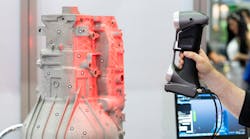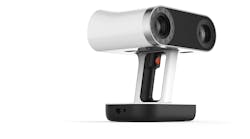Contrary to popular belief, the Easter Bunny does not have a warren of hares meticulously wrapping each of those chocolate bunnies your kids will only eat the ears off of before leaving them to melt on your sofa. It turns out the process is like packaging many other molded products.
Bachman Forming AG, which specializes in custom packaging of chocolates for birthdays and holidays, would create Epoxy resin or milled-wood casts from handcrafted models. The process could take up to 20 hours.
That was ten years ago. Now polyurethane pilot tools are cut on CNC machines. The Swiss-based company wanted to further speed up its digitized process, along with increasing precision, and has turned to 3D scanning. Food products don’t often come from CAD files, so using metrology is the next best thing.
Reseller 3D Model AG provided the chocolatiers with an Artec 3D's Space Spider 3D scanner, its software solution, Artec Studio, and training on how to use both to improve workflow.
Check out how Artec's Space Spider helped NASA: The Amazing Spider Scan.
The device, shaped like an iron, works nearly as easily. Just run the scanner over an object and its sensors detect deformities in the light grid it projects, measuring the geometry.
To further simplify and expedite scans, no adhesive markers are needed to sense depth and shape. The algorithms in the software analyze both the geometry and the color data of the object.
"Especially in the case of chocolate or pralines, it would be pretty hard to stick something on them," says Jörg Nussbaum, a design engineer at Bachmann.
It has led to dramatic speed increases in getting to CNC machining the master form, and decreases any errors due to measuring the bunny by hand. The process takes about an hour, or 20 times less than the traditional method, the company says.
"We were impressed by the easy usability, and the geometry and texture-based tracking of the Artec Space Spider," Nussbaum says. "Capturing color also makes it easy to create photorealistic visualizations in the design phase."
The final packaging is done through a thermoformal process: heating a plastic film to soften it, followed by creating a vacuum to pull the film over the master form. After sticking to the model, the packaging takes on its shape. Once cooled, it becomes solid and is peeled off.
"Before we had Space Spider, this kind of work had to be outsourced, which was very time-consuming and cost-intensive," Nussbaum says. "The external service provider scanned the chocolate bunny as it was, with all the details, so the 3D model also showed all the bumps that were in the chocolate. Now we can immediately intervene in the data processing stage and delete these parts."
Click the gallery to see the process, (as explained by Artec and Bachmann), in more detail.













